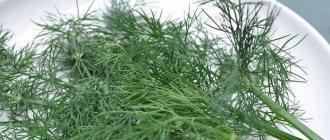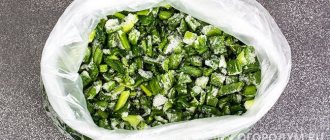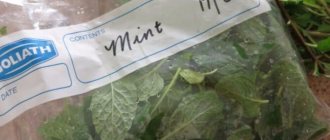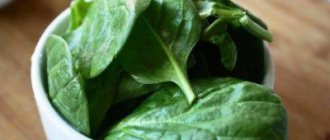Dill, parsley, spinach, basil, cilantro - this is not the entire list of incredibly healthy leafy vegetables. Not everyone knows how to store greens so that they do not wilt soon. In order to make full use of the storehouse of vitamins and minerals, you need to know about the intricacies of saving sorrel, watercress, tarragon, etc. In our article we will tell you in which container it is better to place plants, how to properly store greens in the refrigerator and in other places.
Leafy vegetables are rich in vitamins and minerals that are good for health
Preparing greens for storage
It is especially important to properly prepare herbs for storage. Mistakes at this stage reduce all efforts to zero. Depending on whether the product is purchased or cut from your garden, you will decide how it needs to be processed.
To wash or not to wash?
Depending on the condition of the greenery, it is washed or not. It is not advisable to wet grass from your home garden if there is no visible dirt on it, as this will disrupt the natural protective layer on the leaves and they will dry out faster. The presence of dust, earthen dirt or pests makes washing mandatory.
Wash greens following certain rules, otherwise they may spoil within a few days. Cold water is poured into the basin and left for 2-3 hours. After this, a green bunch is dipped into it and carefully rinsed. Then it is washed twice more, the water is changed, but without settling. As a result, the greens should be completely clean.
After washing, the grass is dried. It is unacceptable to store wet twigs, as they will begin to rot. The bunch is first shaken, and then the branches are laid out in a thin layer on a paper towel and left to air. You can also blot them on top with another towel.
You cannot wash greens under the tap or with warm water, as they will not be stored for long after that.
Basic recommendations
When the greens will be stored outside the refrigerator, you need to prepare them, following the general recommendations.
- Sorting . The greens need to be sorted out. All yellowing, rotting, dry and damaged twigs and leaves are removed. Their presence during storage will only accelerate the deterioration of the product and give it an unpleasant, stale odor.
- Root pruning . If the greens are not cut, but torn out of the garden with roots, then they should be cut off, since they are the first to spoil.
- Washing if necessary;
- Drying.
Next, the grass is stored for storage, choosing one of the existing methods.
You should not pick greens in direct sunlight as this will damage them.
Preparation for the winter
Sorrel is canned for the winter and delicious soups are prepared from it. Cilantro for salads is placed in jars, covered with vegetable oil, and stored in the refrigerator. Finely chopped dill and parsley are sprinkled with salt and stored in the refrigerator in an airtight glass container.
The most common ways to store leafy vegetables and herbs are drying and freezing. If certain rules are followed, most of the nutrients are retained in dried and frozen leafy vegetables.
Drying
Salads, garlic, and chervil cannot be dried. All other varieties of greens grown in the country can be harvested in one of two ways:
- naturally;
- using a special device (electric dryer, oven, microwave oven).
See also
The best ways and rules for storing radishes in winter at home
Under natural conditions, greens are dried in the shade. In the light it loses color and turns yellow. It is laid out in a thin layer on a flat surface or tied into bundles and hung vertically.
For drying, use baking sheets, small sheets of plywood, flat plates and trays. Place paper or cotton fabric underneath. To prevent rotting, the layer of grass is made thin (1-1.5 cm). Turn it over periodically so that it dries evenly.
In an electric dryer, greens are dried at a temperature of 40 °C. It takes from 2 to 6 hours. Exact recommendations for drying greens are given in the instructions for the device. They should be followed. Dry the herbs in the oven with the door open for 2-4 hours. Set the temperature to 40 °C.
Microwave drying takes minimal time:
- clean, sorted raw materials are placed on a paper plate;
- place a napkin on top;
- set maximum power;
- set the time - 3 minutes.
If necessary, increase the time to 5 minutes. The herb dried in any way is ground using a household device or crushed by hand. The finished spice is poured into canvas bags or cardboard boxes. Store for up to six months.
Freezing
Frozen leafy vegetables and herbs retain a large percentage of nutrients. In winter, it is useful to add freezing to prepared dishes. Not all herbal crops can be stored in the freezer. When defrosted, lettuce leaves turn into porridge, onions become watery, and basil loses its aroma.
They tolerate freezing well:
- celery;
- dill;
- sorrel;
- parsley;
- spinach.
How to wash and dry greens is described above. Only clean and dry raw materials are frozen. It is stored in bunches or crushed. Bundles are formed by type or combined. The choice is up to the hostess; it depends on the manner of preparing the dishes and their assortment.
The bundles are packed in cling film and sent to the freezer. After quick freezing, they are placed in a bag, and a piece of paper with the date and name of the greens is also placed there. Dry, crushed grass is placed in yogurt and sour cream cups. For storage use containers and freezer bags.
With the advent of silicone molds, greens began to be frozen in water. Ice cubes are convenient to use when preparing hot dishes, sauces, and drinks. They are easy to prepare:
- leaves, thin stems finely chopped;
- put into molds;
- to fill with water;
- put the form in the freezer;
- Pour the frozen cubes into a container, bag, and place in the freezer.
Places for storing greenery
It is necessary to place the greens in a cool place where they are not exposed to direct sunlight. It would be ideal if it was also humid there. These could be cabinets, closets, basements, or just a cool floor. During the cold season, it is convenient to place the product outside the window, and then it will not lose quality for a long time, similar to what happens in the freezer. It is important to remember that when the thaw begins, the grass will thaw and deteriorate.
When choosing a place, it is worth considering that if the greens are not vacuum-packed, they may absorb unpleasant odors. Because of this, it is not placed next to strong-smelling products or chemicals.
Product storage features
You need to know what affects the quality of greens cut from the garden or purchased at the market. Under suitable conditions, bunches of dill, parsley, and mint retain the aroma and color of the stems and leaves for a long time. Greens are best stored in the refrigerator. It lies in it for a week if it is properly prepared.
Oxygen
Contact with oxygen does not benefit cut greens. Leaves and stems lying in the open air quickly wither and darken.
Illumination
Sunlight has a negative effect on cilantro, parsley, spinach, and other leafy vegetables. The leaves of cut plants begin to turn yellow and quickly lose vitamin C. Even on the way from the market, it is better to cover a bunch of greenery from direct sun.
Humidity
High and low percentages of humidity in the storage environment are equally harmful. If there is too much moisture, leafy greens rot, and if there is too little, they wilt.
What to store in
A variety of storage containers can be used. Depending on which one is chosen, the product will last longer or shorter. You can also simply put a fresh bunch in a glass of water, which needs to be changed daily. So the greens remain in satisfactory condition for up to 7 days, but by the end of this period they turn a little yellow.
When you need to preserve herbs without refrigeration for the winter, mint, parsley, dill and cilantro can be dried.
| Glass jar | Such containers for storing herbs when they cannot be put in the refrigerator are deservedly considered one of the best. Place dry greens in a clean container and lightly sprinkle with water from a spray bottle. Then the jar is closed with a tight lid. Depending on the room temperature, the product will last from 5 to 25 days. |
| Plastic bottle | A plastic bottle, like a glass jar, provides suitable conditions to keep greens fresh for about a week without refrigeration. This method allows you to protect the product from spoilage for 5-10 days, but the herbs can accumulate a chemical smell, which, of course, is a big disadvantage. |
| Vacuum container | One of the best options for storing greens indoors at different temperatures. In such a container it will be possible to maintain sufficient humidity, which will prevent the contents from drying out. In a container, tender lettuce leaves can last up to 4 days, and parsley and dill will not lose their quality for almost 3 weeks. |
| Food package | Cheap packaging that will not keep the contents safe for a long time. It is better to use a bag to cover a bunch that is standing in water or wrapped in a damp cloth. If the herb is only placed in a bag, then it should be lightly sprinkled with water and then closed tightly. At the same time, to prevent the greenhouse effect, it is advisable to puncture several small holes in the packaging. The package should be placed in the coolest place. The greens will last about 5-7 days. You only need to use a new bag; a used one is not suitable for storing greens outside the refrigerator. |
| Wet paper | Herbs can also be stored quite well in paper. Taking a paper towel, wrap the greens in it. After this, the towel is wetted. Then the bundle is additionally wrapped in parchment and tied with thread. If you keep the paper towel moist at all times, depending on the type of packaged greens, they will stay fresh for one to two weeks. |
LiveInternetLiveInternet
Today, rarely is any summer dish prepared without the use of fresh herbs. It is included in many recipes, used to decorate dishes or simply placed on the dining table - for gourmets.
One problem is that fresh greens don’t last long, and after a couple of days they begin to lose their presentation—a few days later, and they become limp and unappetizing.
And every time housewives have the problem of storing greens, in particular green onions, dill, parsley, lettuce, spinach, sorrel.
To always have truly fresh greens on the table, use the following tips:
Secrets of long-term storage of greens
It should be remembered that the main enemy of the vitamins contained in greens is light and heat. When exposed to sunlight, vitamin C is lost faster in greenery - a few hours are enough for this.
Therefore, green vegetables should only be stored in the refrigerator, preferably in a tightly closed bag or container. There are several ways to store greens, choose any one.
So, greens can be stored in the refrigerator for at least a week using one of the following methods:
Tip 1. The easiest way. Rinse greens with cold water. It is advisable not to wash under running water, but to fill a deep saucepan with water and immerse the greens in the water. And then finally rinse under the tap. Then place the washed and shaken greens on paper kitchen towels. We need to dry the greens as best as possible. Blot large drops of water and place the greens on the table, let them dry for about fifteen minutes. Next, pack in a spacious container with a tight-fitting lid (a vacuum sealer is even better).
If there is no container, then take a clean, dry liter jar, put the greens in it and close the jar with a clean plastic lid. That's all. Keep refrigerated. In this form, the greens stand quietly for a month and do not spoil or even turn yellow.
Tip 2. To keep greens and leafy vegetables fresh for several days, you should carefully sort them out (throw away spoiled ones), rinse them, let the water drain and place them in a plastic bag. Then open it wide so that the maximum amount of air can get into it, and tie it tightly. Keep in the refrigerator on the bottom shelf.
Tip 3 . Greens can be stored for 2-3 weeks if before storing they are washed well, drained, blotted with a towel, and wrapped in paper (not waxed). Kraft paper or a thick paper towel are well suited for this method, the main thing is that the paper does not unravel from moisture. Wrap the clean herb completely in a towel. Spray the paper with water from a flower spray bottle or wet it under the tap. Place the bundle in a plastic bag and place it in the refrigerator.
Do not use newsprint - printing ink is harmful to the body.
Tip 4. For long-term storage of greens, they should be sorted, but not washed. Then place in a plastic bag along with 1-2 onions, unpeeled and cut into four pieces, and tie. Store in a cool place. Every 4-5 days, take everything out, wipe the bag dry and put the greens back into it, replacing the onions with fresh ones.
Tip 5 . If you don’t have time, you can simply wrap fresh greens immediately after purchase with a waffle towel and put them in the refrigerator.
Tip 6. Green onions, celery, lettuce, spinach, parsley, and dill can be stored in the refrigerator for quite a long time if they are dry. There is no need to wash such greens before storing them - just sort them out, dry them on paper and put them in a plastic bag, making several holes in it with a fork for ventilation. Celery greens in a plastic bag can remain fresh in appearance for 5-6 weeks, lettuce cut together with the stalk - 1-1.5 months, spinach - almost all winter.
Tip 7. Parsley and dill can be stored like flowers, placed in a glass of water: cut off the roots of fresh herbs, put a bunch of greenery stems in a jar or glass of water, cover the leaves of the greenery with a plastic bag on top (or wrap the leaves with damp gauze or other clean cloth), change the water once every two days
Tip 8: Lettuce will stay fresh and crisp all week if you place it on a plate, place a paper towel on top, and cover with cling film.
Tip 9. Green onions can be kept fresh for two to three weeks if you sort them, moisten the roots with cold water and leave the feathers dry. Then wrap the roots with the onion with a wet rag, and on top of the rag, wrap the roots with the onion in paper, tie it at the base of the feathers with twine, place it in a plastic bag and put it in the refrigerator.
Freezing greens as a storage method
To store greens for a longer period, they should be frozen.
- To do this, you need to wash fresh greens, wait until they are dry from moisture, cut off their stems, and throw away the rotten parts. Then place the green leaves in bags or airtight containers in the freezer of the refrigerator.
- To properly rinse greens in a large amount of water, it is recommended not to drain the water after washing the greens, but to remove the greens from it so that the sand remains at the bottom of the dish and not on the greens themselves.
- Classic. Chop the greens, put them in a plastic bag and put them in the freezer
- parsley, sage and thyme , and it is better to freeze them in tightly sealed plastic containers
- dill and mint in small portions wrapped in foil: divide the dill and mint into portions. Wrap each piece in food foil and place in the freezer.
Each type of greenery can be pre-labeled on foil with a marker (for example, mint - m, dill - y), for faster and more convenient searching in the freezer. This method is quite effective in terms of storing greens all year round and you can freeze a fairly large amount of greens.
- basil and rosemary leaves on top with salt and freeze them in tightly sealed plastic containers; remove the salt before use.
- Store chopped green onions in the freezer in plastic bottles. Just make sure the onions are completely dry before you put them in the bottle.
- And one more, in my opinion, interesting way of freezing fresh herbs : Wash a mixture of herbs (anything: basil, cilantro, dill, parsley, etc.), dry with a towel and place on a layer of plastic film in the form of a thick sausage. Wrap the “sausage” very tightly and, to be sure, tie it along the entire length with thread (you can use a rubber band).
Don't use salt! Place in the freezer. In my freezer I have a place on the side reserved for such a log with herbs. I don't sign, you can sign using masking tape. If necessary, take it out, bend the plastic and cut with a knife as much as you need directly into the plate with the soup. Or remove the film and cut - the greens cut very well and do not lose their flavor!
- There is another original way - freezing fresh herbs in ice cubes. To do this, you need to finely chop the leaves of fresh herbs and place them in ice trays supplied with the refrigerator, fill the molds with the herbs with water and place them in the freezer. Store the finished cubes in a bag or box in the freezer. It is very convenient to throw such a cube into a pan with soup (or other dish) when the soup has already been cooked.
- As an option, you can freeze greens in this way: Fill ice cube trays with greens, add olive oil or melted butter , and put them in the freezer. Then you can add it to salads or potatoes!
These simple tips will help you keep fresh herbs collected from the garden or purchased at the market fresh for a certain time and preserve the nutrients and vitamins in them as much as possible.
Don’t neglect the tips, even if they seem too simple to you to be effective :o) Thanks to them, the greens are stored for a very long time, and you can safely buy them for a week in advance. Based on materials from www.imhoweek.ru, eh-zhituha.ru
PS. How to Refresh Wilted Greens
- If the greens have wilted, then to restore their freshness it is enough to hold them for an hour in cold water, slightly acidified with vinegar (1 teaspoon per half glass of water).
- If you rinse parsley in warm rather than cold water, it will become more fragrant.
- Wilted lettuce leaves can be refreshed by rinsing them or soaking them in warm water for 15 minutes.
- Wilted green vegetables will become fresh again if you dip them first in hot and then in cold water.
How to store certain types of greens
| View | Storage |
| Salad | The most delicate type of greens will last for several days without refrigeration only in a glass jar, and only if the product is initially very fresh |
| Arugula | Stronger greens than lettuce, but they should also be stored in a jar or vacuum container |
| Sorrel | Can remain in a bag for up to 5 days without loss of quality, and in damp paper for up to 10 days |
| Spinach | Will last in the jar for no more than 5 days |
| Dill | Preserves well in any container or just as a bouquet standing in a glass of water |
| Parsley | Similar to dill, but a little less |
| Onion | It is better to store green onion feathers in a plastic bottle or any tightly closed container, but no more than 5 days. |
How many days can herbs not wither, and what container will be optimal for storage, depends on their type. The more tender the leaves of vegetable herbs that need to be preserved, the more airtight packaging is required and the less they will last without refrigeration.
Rules, secrets and tricks of storage
Long-term storage of greens without a refrigerator is also possible if you know certain tricks. This way, the product will remain fresh longer if you constantly maintain moderate humidity in the storage container by sprinkling the contents from a spray bottle every other day.
Also, if it is discovered that some of the leaves have begun to deteriorate, the contents of the dishes are sorted out and, discarding the bad ones, the remainder is washed with cold water and a small amount of salt, and then stored again.
Patee.
iOSAndroid
In a paid application, more like a social network, recipes are posted by both developers and registered users. You can scroll through the recipe feed with the usual movement of your thumb, leaving comments and likes along the way.
Useful features:
- Encyclopedia of products: calorie content, composition, how to cook, what to serve and combine with, how to choose in the store, store at home and to whom the product may be harmful.
- Encyclopedia of food additives: a detailed description of all E.
- Step-by-step instructions with photos and some recipes - video instructions.
- Detailed composition of dishes. The dream of perfectionists is KBJU, broken down by the amount of certain amino acids, saturated and unsaturated fats, vitamins and minerals.
Synchronization: iPhone, iPad, and iPod touch.
Compatibility: iOS 7.0, Android 4.1 or later.
Cost: Almost all recipes are available only if you purchase a premium subscription (it’s inconvenient to look for free ones; it’s easier to pay right away).
Lifetime unlimited subscription – 849 rubles, year – 699 rubles. For those who want to fully test the application before paying, it is possible to buy access for a day for 15 rubles, for a month for 149 rubles. and for six months for 299 rubles.
How to bring greenery to life?
When the greens begin to wither, you can try to revive them. If you start doing this in a timely manner, the result will be good.
- This method is good for dill and parsley. The bunch is placed in a bowl of cold water, to which a teaspoon of vinegar has been added. The grass should be allowed to sit for an hour.
- In case of severe wilting, it is useful to rinse the grass with hot water and then immediately immerse it in cold water for 20-30 minutes.
- Tender lettuce leaves will feel better if you soak them in warm water and let them sit for 15 to 20 minutes.
- Green onions that have begun to dry out can be refreshed by placing them in cold water with a few pinches of salt for 10 minutes.
After reconstitution, the product will no longer be stored for long and should be consumed within 24 hours. Later the greens will have to be thrown away.
Latest developments
The modern kitchenware industry offers special containers for greens that can be used without refrigeration or placed in the refrigerator. They are made in such a way that the herbs remain vertical during storage, and the ends of the stems are constantly in clean water. Hermetically sealed, these containers create optimal conditions for the greens, in which they are preserved for quite a long time, just like on the roots.
Greens are not as delicate a crop as they might seem at first glance. It can be preserved without refrigeration for quite a long time. You can also preserve the product for the winter without refrigeration if you dry it.











